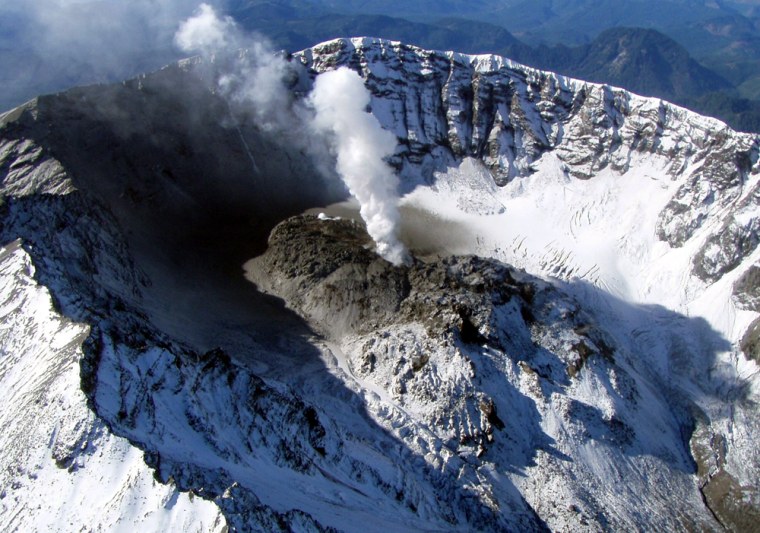Washington state's top polluter isn't a pulp mill, a power plant or refinery. It's the newly awakened Mount St. Helens. Since the volcano began erupting in early October, it has been pumping out 50 to 250 tons a day of sulfur dioxide, the lung-stinging gas that causes acid rain and contributes to haze.
Those emissions are so high that if the volcano were a new factory, it probably couldn't get a permit, Clint Bowman, an atmospheric physicist for the Washington Department of Ecology, told The Seattle Times.
All of the state's industries combined produce about 120 tons a day of the noxious gas. Normally, the state's No. 1 polluter is a coal-fired power plant near Centralia owned by the Canadian firm TransAlta. The plant churned out 200 tons a day of sulfur dioxide until regulators demanded $250 million worth of renovations, bringing the level down to 27 tons a day. Tough to get those kind of results from a volcano.
"You can't put a cork in it," said Greg Nothstein of the Washington Energy Policy Office.
Because the area around St. Helens is so sparsely populated, officials say they haven't heard complaints about respiratory problems linked to the emissions. But persons with sensitive breathing ailments probably would feel the effects if they lived close to it, said Bob Elliott, executive director of the Southwest Clean Air Agency in Vancouver.
"We are very fortunate, in terms of the impact on human health, that Mount St. Helens is pretty remote," Elliott said.
Not smog, but vog
Italy's Mount Etna can produce 100 times more sulfur dioxide than Mount St. Helens, and it sits in the middle of a heavily populated area. The volcano spawns acid rain and a type of bluish smog that volcanologists call vog, which can affect large swaths of Europe, said Terry Gerlach, a U.S. Geological Survey scientist.
Kilauea Volcano on Hawaii's Big Island churns out 2,000 tons a day of sulfur dioxide when it's erupting, creating an acid fog that damages local crops.
The impact from St. Helens hasn't been as noticeable, but, Gerlach said, "If you were to go and collect rainwater just downwind of the volcano, I suspect you would see some acid rain."
Worldwide, sulfur dioxide emissions from volcanoes add up to about 15 million tons a year, compared to the 200 million tons produced by power plants and other human activities.
Volcanic gases bubble out of magma as it rises to the surface, and the amount and type of emissions depend on the chemical makeup of the molten rock. In addition to sulfur dioxide, volcanoes also release smaller amounts of other noxious gases, including hydrogen sulfide and hydrogen chloride.
They also release carbon dioxide, the greenhouse gas that's primarily blamed for global warming. Mount St. Helens produces between 500 and 1,000 tons a day of carbon dioxide, Gerlach estimates.
Worldwide, people and their activities pump 26 billion tons of carbon dioxide a year into the atmosphere, he said. The total from volcanoes is about 200 million tons a year — or less than 1 percent of the man-made emissions.
